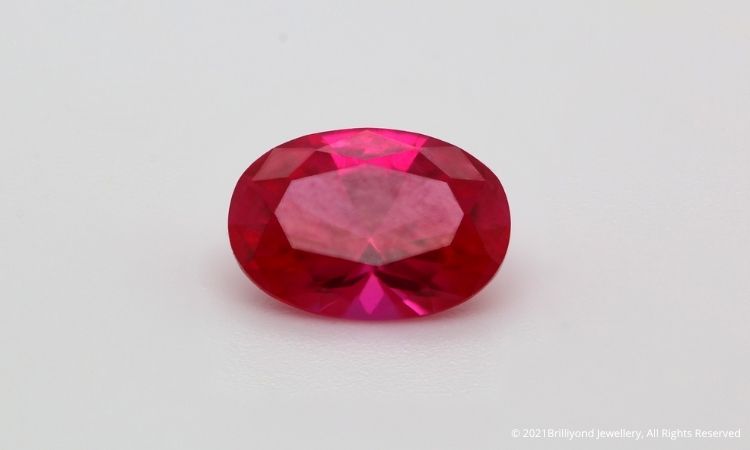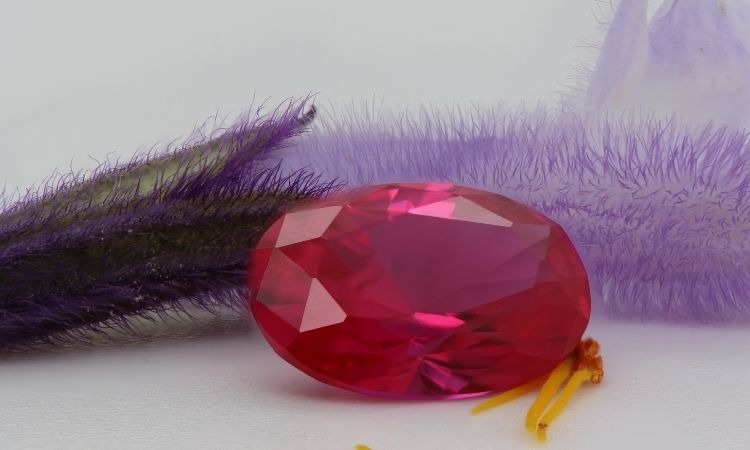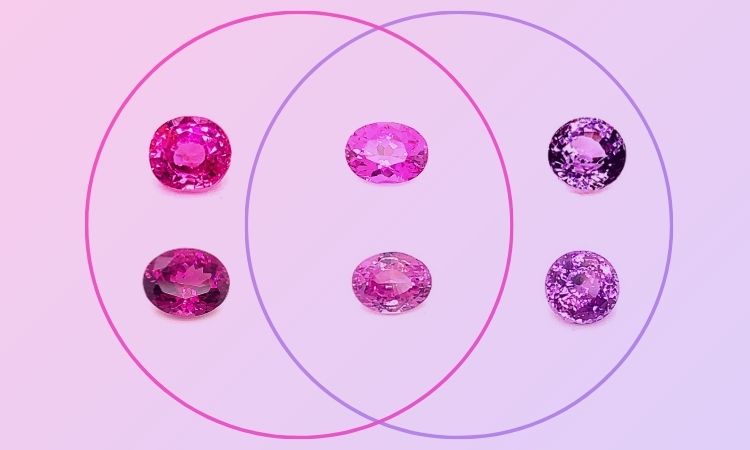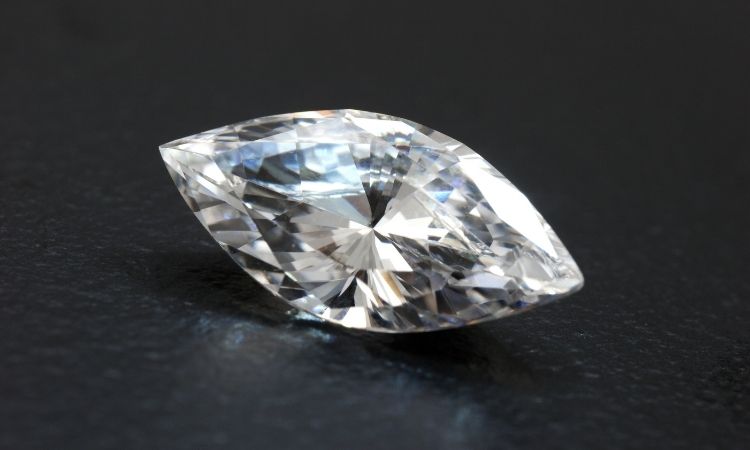When Does a Pink Sapphire Become a Ruby? Expert Guide
When Does a Pink Sapphire Become a Ruby?
Within the glittering world of gemstones, few questions spark as much fascination—and debate—as the boundary between pink sapphires and rubies. Both gems dazzle with their vibrant hues and share a common origin in the corundum mineral family, yet the line dividing them is not as clear as many might think. So, when does a pink sapphire become a ruby? In this comprehensive guide, we'll explore the science, history, and market influences behind this captivating color conundrum.

ruby gemstone
Understanding Corundum: The Family of Rubies & Sapphires
To grasp the difference between pink sapphires and rubies, it's essential to start with their common ground. Both stones are varieties of corundum, an exceptionally hard mineral that rates 9 on the Mohs scale—second only to diamond. What sets them apart is the presence of trace elements, which influence their color and value.
- Rubies: Defined as red corundum
- Sapphires: All other colors of corundum, including pink, blue, yellow, and green
The Color Spectrum: Where Pink Meets Red
The primary distinction between a pink sapphire and a ruby lies in color. While this may sound simple, the reality is far more nuanced:
- Rubies are prized for their deep, vivid red hues
- Pink sapphires can range from light pastel pinks to vibrant magentas
The red coloration in rubies is caused by higher concentrations of chromium, while lower chromium content results in lighter, pinker shades—classified as pink sapphires.
Subjectivity in Color Classification
One of the most significant challenges in this distinction is the subjectivity of color perception. What one gemologist or country might classify as ruby, another may call pink sapphire. There is no universal standard, and the boundary between red and pink is often debated, influenced by cultural preferences, lighting conditions, and even marketing strategies.
International Standards: How Is the Distinction Made?
Different countries and gemological laboratories may use varying criteria:
- United States (GIA): The Gemological Institute of America classifies corundum as ruby only if the stone's color is considered "red" (including slightly purplish to orangey red hues). If the stone is not red enough, it's called pink sapphire.
- European Standards: Some European gemologists are more inclusive, allowing stones with lighter red or strong pink hues to be classified as rubies.
- Market Influence: In countries where rubies fetch a higher price, there's sometimes a commercial incentive to label borderline stones as rubies.
Key Takeaway:
The distinction between pink sapphire and ruby is ultimately determined by color saturation and hue, and can vary depending on gemological standards and market practices.
What Makes a Ruby Valuable?
The market value of rubies is among the highest of all colored gemstones—sometimes even surpassing premium-quality diamonds. Several factors contribute to their value:
- Color: The most valuable rubies possess a pure, vibrant red to slightly purplish-red color, known as "pigeon blood" red.
- Origin: Rubies from Myanmar (Burmese rubies) are particularly prized for their exceptional color and clarity.
- Clarity: Eye-clean rubies are rare, and inclusions can significantly impact value.
- Size: Larger rubies are exceedingly rare and fetch premium prices.
- Treatments: Many rubies are heat-treated to improve color and clarity. Untreated stones are rarer and more valuable.
- Certification: Independent gemmologist certification is highly recommended when purchasing high-value rubies.
Pink Sapphires: The Affordable Alternative
While pink sapphires may not command the same prices as rubies, they offer their own unique allure:
- Available in a range of pink tones, from delicate blush to vivid magenta
- Generally more affordable than rubies, making them accessible for a wider range of buyers
- Excellent hardness and durability, suitable for everyday wear
- Often found in alluvial deposits and metamorphic rocks
Major Sources of Pink Sapphires
- Sri Lanka (Ceylon)
- Madagascar
- Tanzania
- Myanmar
Geographical Origins: Why Does It Matter?
Origin plays a crucial role in determining both the value and desirability of rubies and pink sapphires. Here’s why:
- Burmese Rubies: Renowned for their rich, saturated red color and high clarity
- Other Notable Sources: Thailand, Sri Lanka, Madagascar, Tanzania
- Pink Sapphires: Primarily sourced from Sri Lanka, Madagascar, Tanzania, and Myanmar
Gemstones from prestigious origins typically command higher prices and are more sought after by collectors.
Enhancements and Treatments
Both rubies and pink sapphires are commonly subjected to heat treatment to intensify color and improve clarity. While this is an accepted practice, it's essential to:
- Ask for full disclosure of treatments when purchasing
- Request certification, especially for high-value stones
The Market Perspective: Demand and Trends
The popularity of both rubies and pink sapphires continues to rise, driven by their beauty, durability, and historical allure. Some notable trends include:
- Growing demand for ethically sourced and untreated stones
- Increasing preference for unique pink sapphire engagement rings as an alternative to traditional diamonds
- Continued rise in ruby prices, especially for stones with desirable origin and color

created ruby gemstone
How to Buy: Tips for Discerning Buyers
If you’re shopping for a pink sapphire or ruby, keep these tips in mind:
- Request Certification: Independent gemmologist reports can confirm authenticity, treatment status, and origin.
- Understand Color Grading: Ask your jeweler how they distinguish between pink sapphire and ruby, and request to see the stone in different lighting conditions.
- Consider Origin: Stones from reputable sources often have higher value and better resale potential.
- Ask About Treatments: Untreated stones are rarer; treated stones can still be beautiful and more affordable.
Frequently Asked Questions
1. Can a pink sapphire become a ruby over time?
No, the color of a corundum gemstone is stable over time. However, the classification may change if gemological standards or market preferences shift.
2. Is there a universal standard for distinguishing pink sapphire from ruby?
No, standards vary between countries and gemological laboratories. The boundary between pink and red is subjective and may depend on color saturation and hue.
3. Are pink sapphires less valuable than rubies?
Generally, yes. Rubies, especially those with desirable color and origin, are rarer and usually command higher prices than pink sapphires.
Conclusion
The question of when a pink sapphire becomes a ruby is a captivating example of how science, art, and market forces intersect in the world of fine gemstones. While the distinction ultimately comes down to color—specifically, the intensity and saturation of red hues—the boundary is not always clear-cut. By understanding the nuances of corundum, color grading, origin, and market practices, buyers can make informed decisions and appreciate the unique beauty each stone offers.
Whether you prefer the passionate depth of ruby or the playful elegance of pink sapphire, both gems continue to captivate collectors and jewelry lovers worldwide. When purchasing, always seek professional advice, certification, and full disclosure to ensure your gemstone investment is both wise and beautiful.






Comments (0)
Write your review